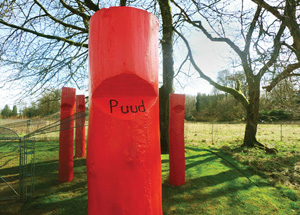Gallery: Charles Jencks
The Garden of Cosmic Speculation
By Katie Yurkewicz
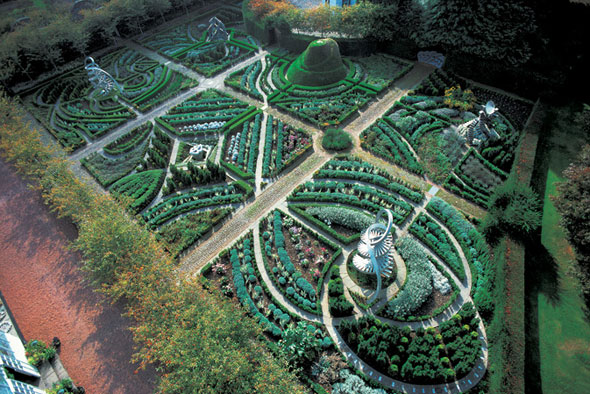 |
| Not just physics: The DNA Garden explores the building blocks of life and sight, sound, hearing, taste, touch, and intuition. Paths in a linear wave pattern emphasize the exchange of information between cells and DNA. |
What is a garden if not a miniaturization, and celebration, of the place we are in, the universe?
Charles Jencks
During the next 20 years, the project became a focal point for Jencks exploration of natures fundamentals, the process of scientific discovery, and modern scientific achievements. The resulting Garden of Cosmic Speculation challenges societys ideas of how one experiences nature and what a garden looks like. |
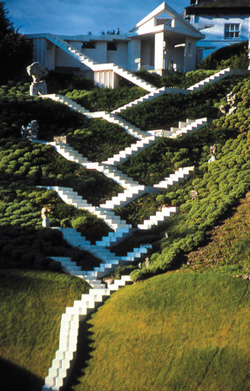 |
| The Universe Cascade. Starting at the top in the present day, visitors descend through 13 billion years of cosmic evolution. Twenty-five landings mark important shifts in cosmic history. At the bottom of the cascade, the steps disappear into murky water, reflecting the ultimate mystery of the origin of the universe. |
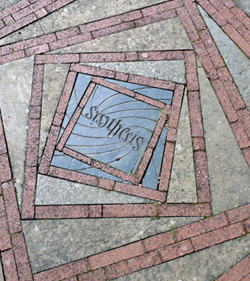 |
| One of the gardens many ambigrammi, a manifestation of symmetry in words. Photos: Charles Jencks, James Gillies, and maverickphotoagency.com |
Gravity is a law of nature. Electromagnetism, the four forces—those sort of things are nature and they underpin all of growing nature, Jencks says. And so a garden is a really interesting place to speculate on the ultimate forces of nature and laws of nature and constants, and thats what I do with scientists and artists and friends and philosophers.
Woven throughout the garden are themes from biology, cosmology, mathematics, and philosophy. But physics provides the underlying metaphor: waves.
Strange attractors—forms that chaotic systems evolve toward over time—inspired the twisting wave structure of the 350-foot-long Snake Mound. Soliton waves, which can travel through each other and still keep their identities, appear as terraces, fences, and gates designed to keep out hungry bunnies. The wave-like nature of electrons shows up as fuzzy mesh in a representation of the deuterium atom. The curving and stretching of space-time near a black hole becomes a dining terrace made of Astroturf and aluminum.
In the Quark Walk, eight red-painted tree trunks represent the pattern created by the mixing of three types of quark. An undulating fence runs through them; its mesh fabric creates interference patterns, exposing the wave-like nature of light, while the ends of the fence sprout sprays of particle tracks.
Many of the gardens narratives come together in the Universe Cascade, a waterfall and staircase leading from the house to the garden. It represents the evolution of the universe as a series of steps, or symmetry breaks, from the beginning of time up through 25 levels to the present. On each level, displays containing local rocks and minerals represent the stages of evolution.
Jencks work on this garden, and on subsequent projects in Scotland, Europe, and India, has been carried out in close collaboration with researchers.
Im very interested in translating with scientists the ultimate languages of nature at the very small scale, he notes. And the very big; his landscape for a garden in Milan, Italy, combines the most recent understanding of the formation of spiral galaxies with prehistoric stone circles that mark and measure the changes of seasons.
Jencks is also developing a landscape project at CERN, the European laboratory for particle physics in Geneva, Switzerland, including a garden that may eventually be one of the first aspects of CERN that visitors see. The garden would give people a way to experience particle physics with their senses.
Thats the job of artists. Its the job of landscape, he says. Its the job of us to give people sensuous equivalents.
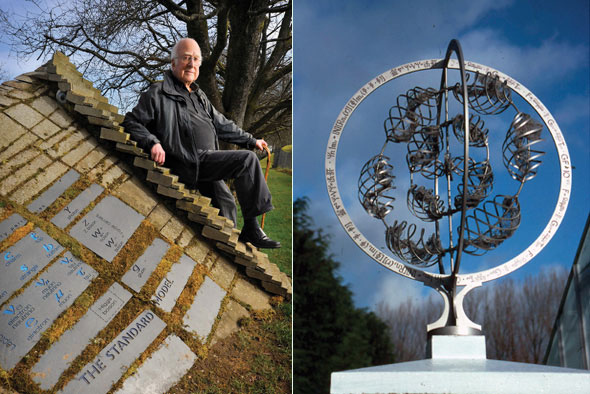 |
| Left: The Standard Model offers a seat—in this case to theoretical physicist Peter Higgs—on which to ponder the question: Are these 17 particles the smallest building blocks of nature? Right: Model of the deuterium atom, held up by the Schrödinger equation and showing electron orbits as waves (mesh) and particles (curved metal). |
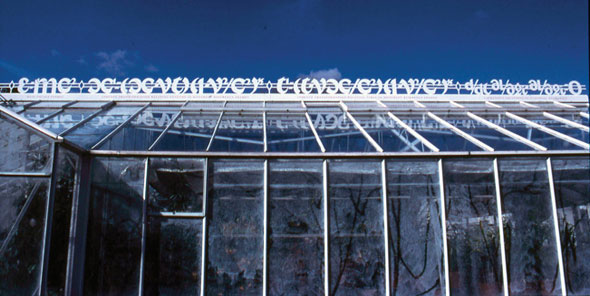 |
| Equations that govern the universe adorn a greenhouse. |
The laws of nature may be omnipotent, but they can also be challenged. A garden is a perfect place to try out these speculations and celebrations because it is, of course, a bit of man-made nature, a fabricated and ideal cosmic landscape, and a critique of the way the universe is.
Charles Jencks
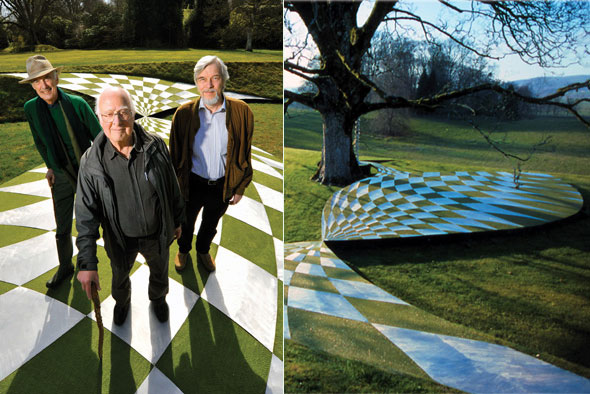 |
| Left: Charles Jencks is shown on the left, along with theoretical physicist Peter Higgs and CERN Director-General Rolf Heuer. Right: Views of the Black Hole Terrace. |
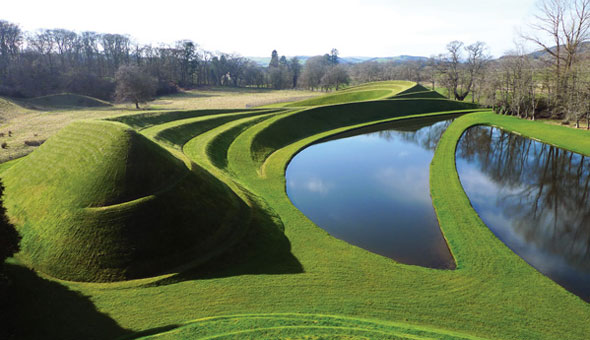 |
| Twisting waves, found throughout the garden, are represented in large scale in the Snake Mound. |
Click here to download the pdf version of this article.



